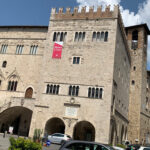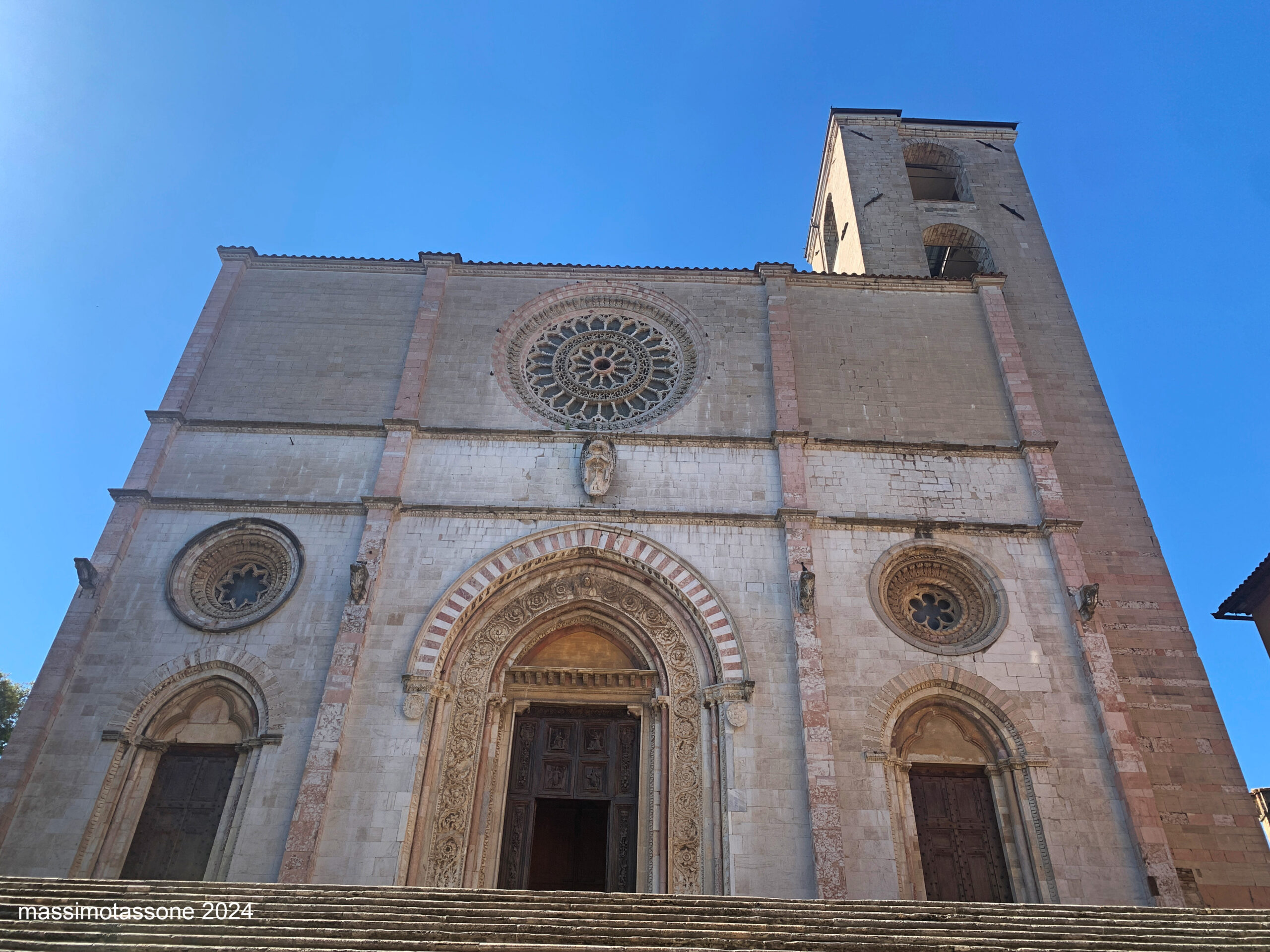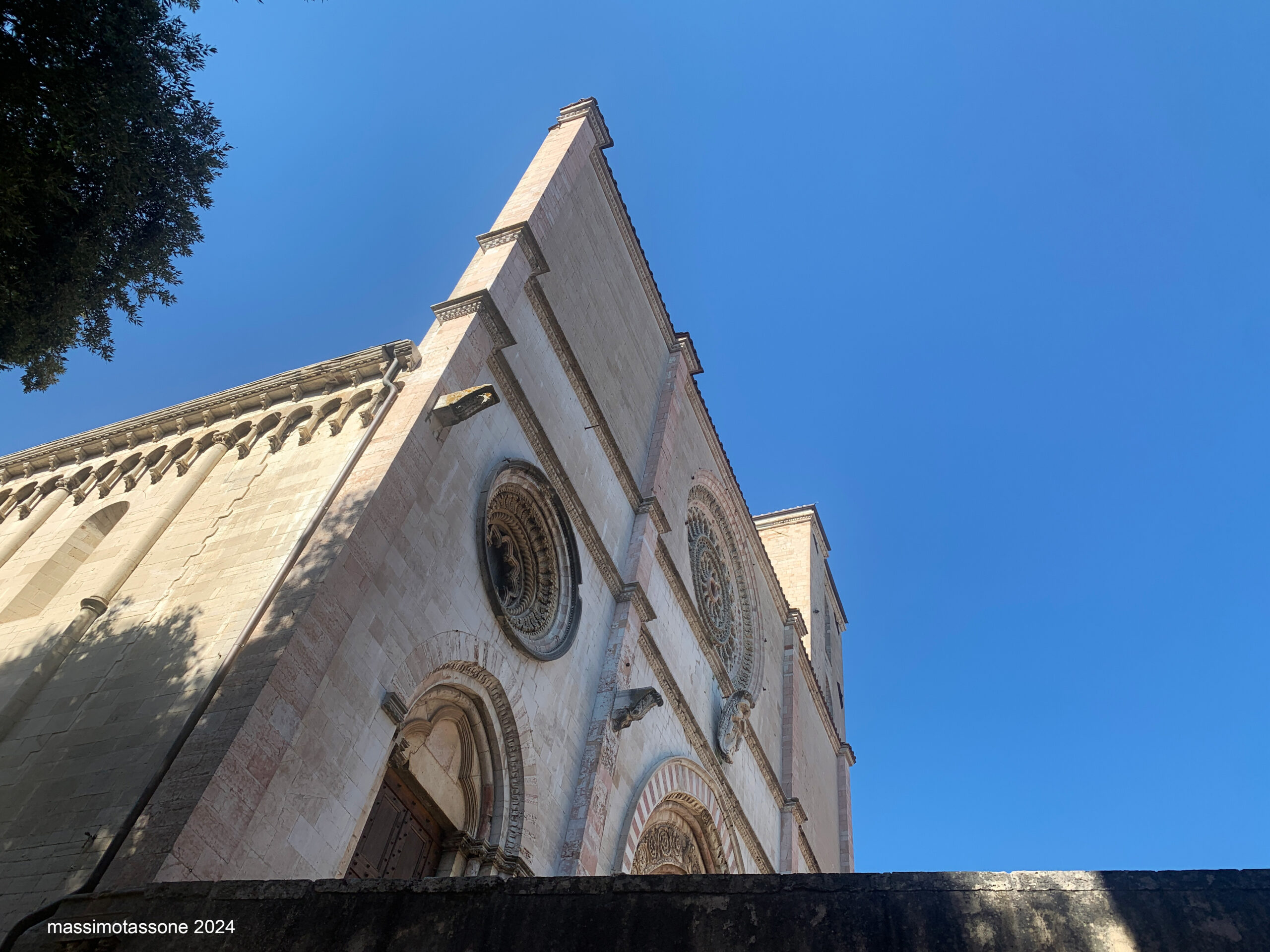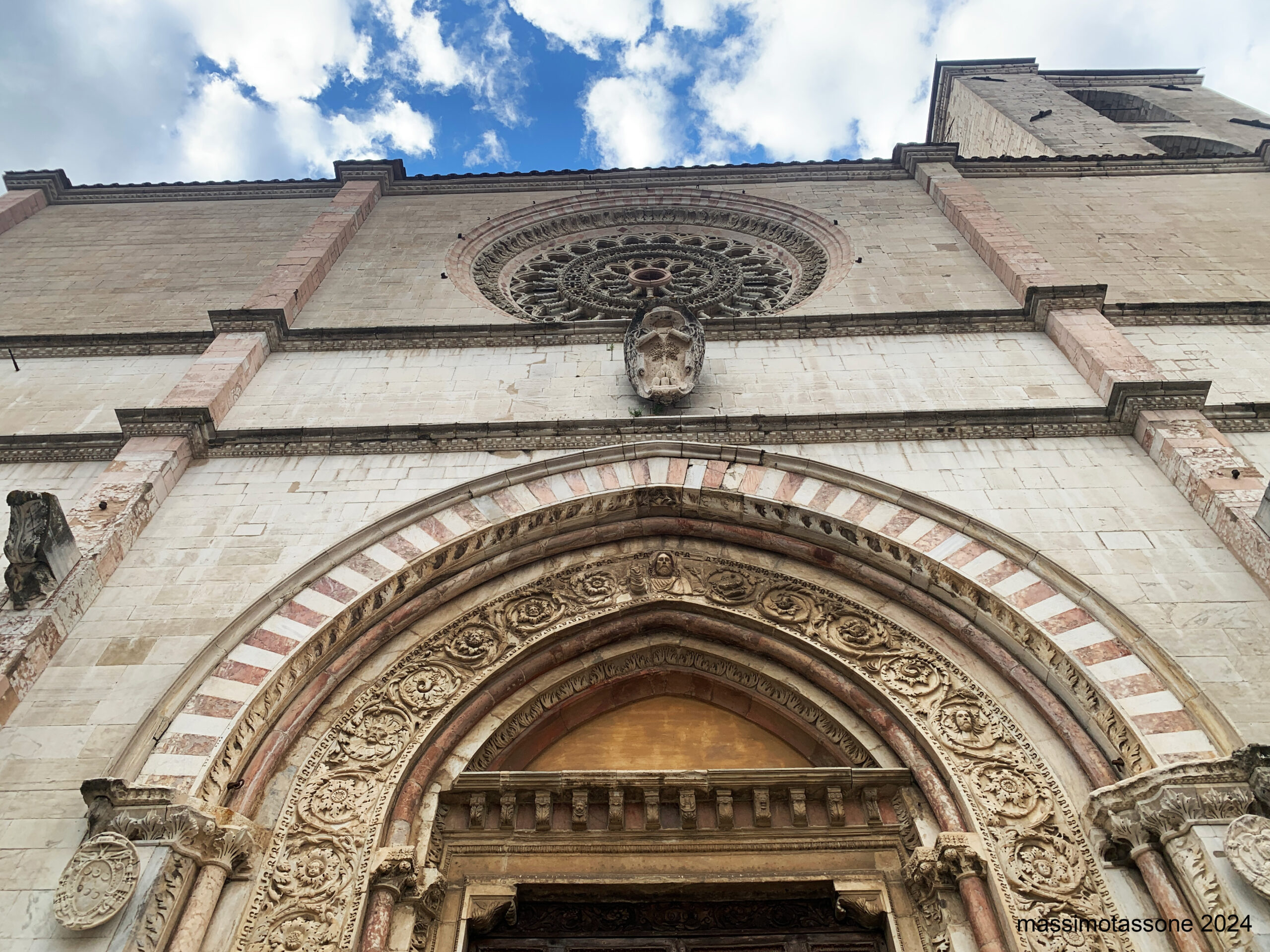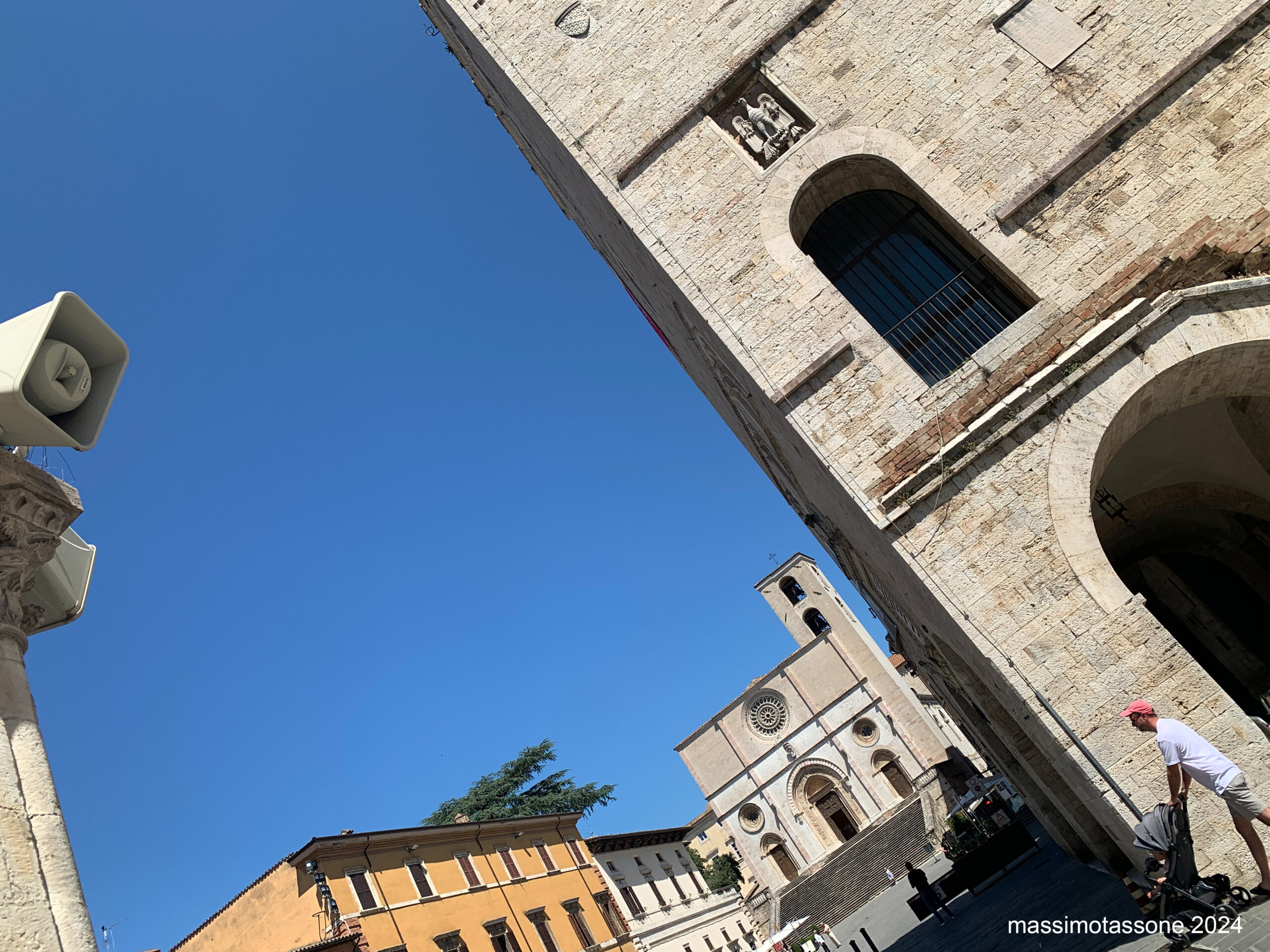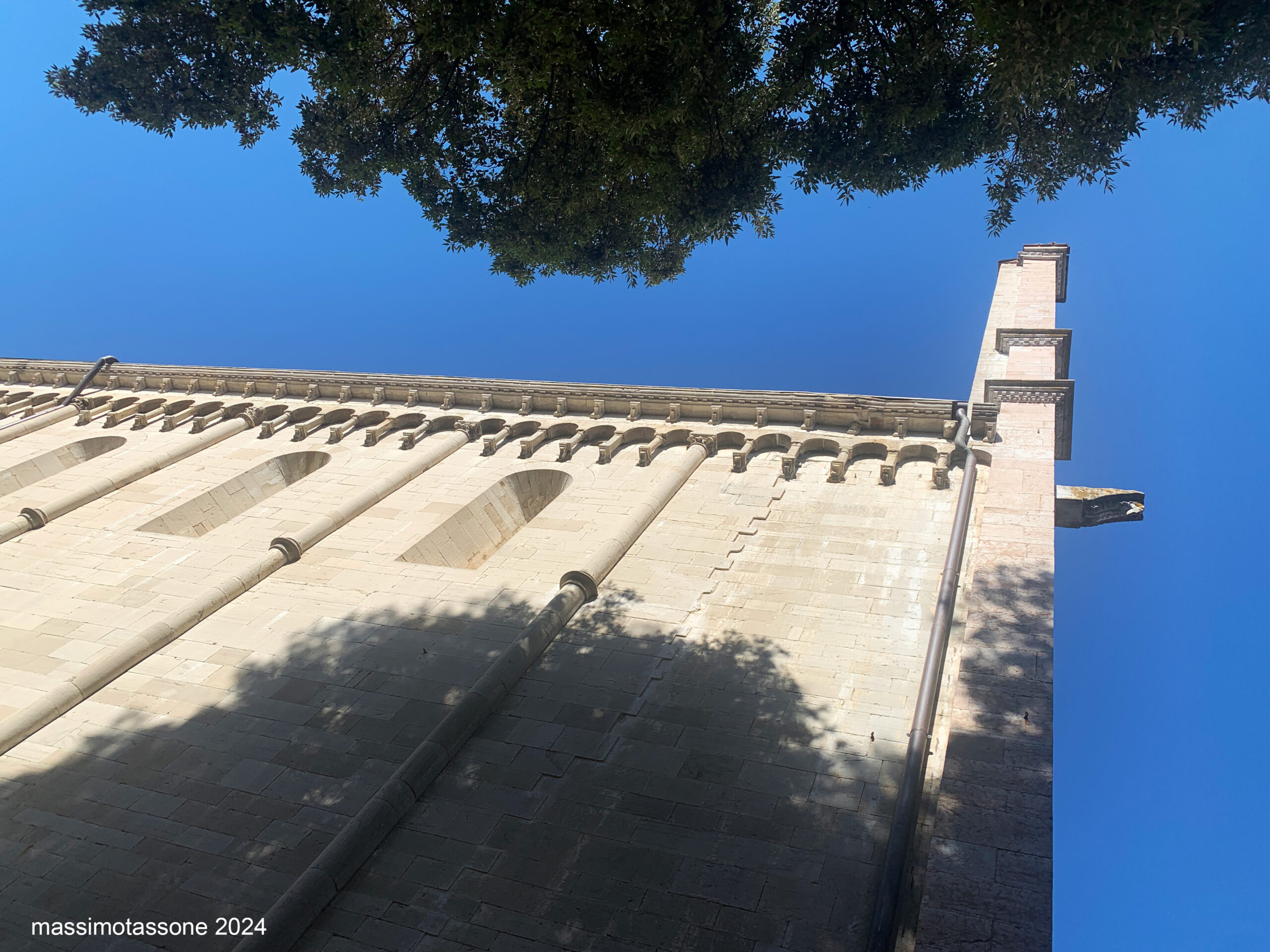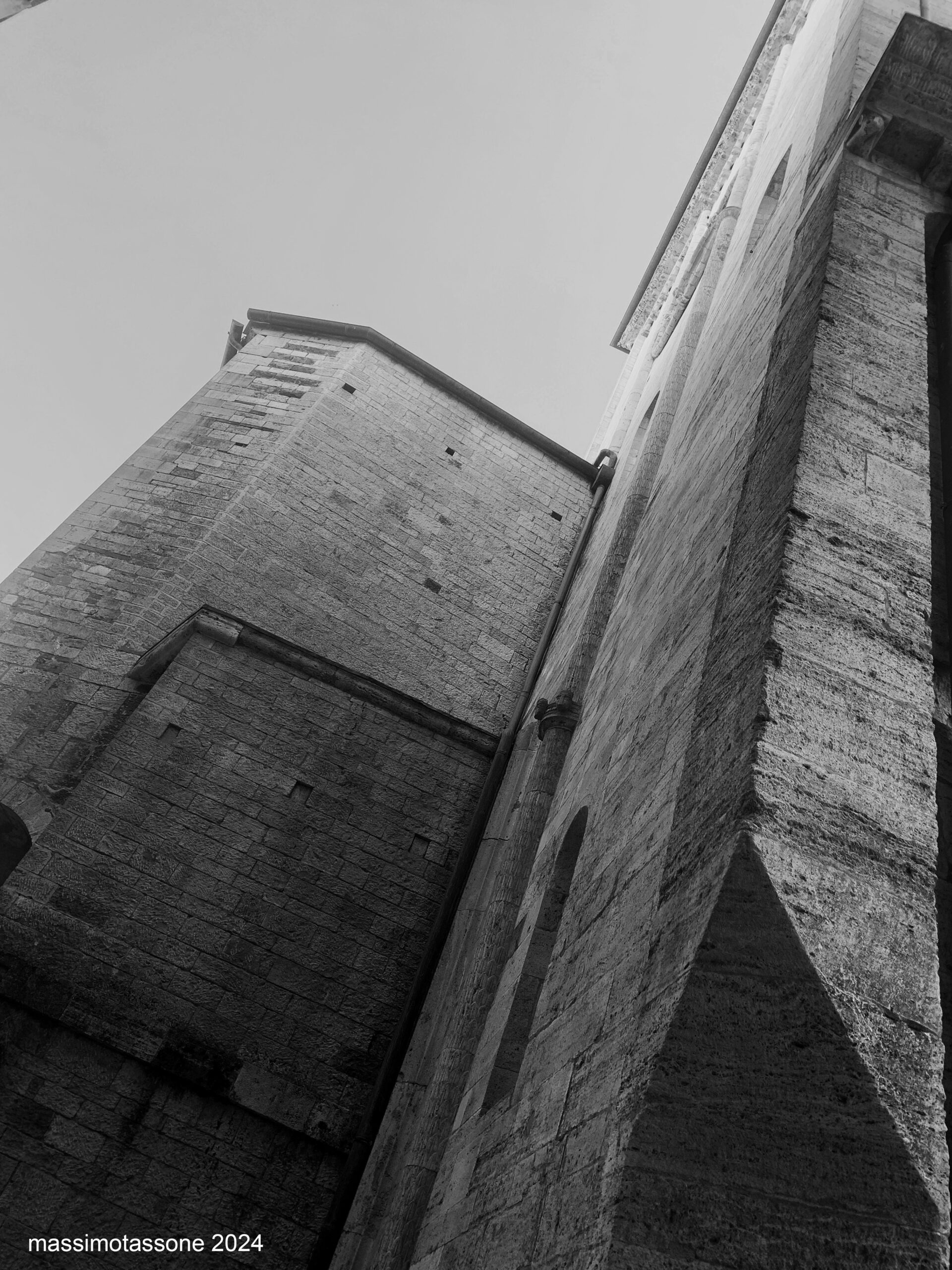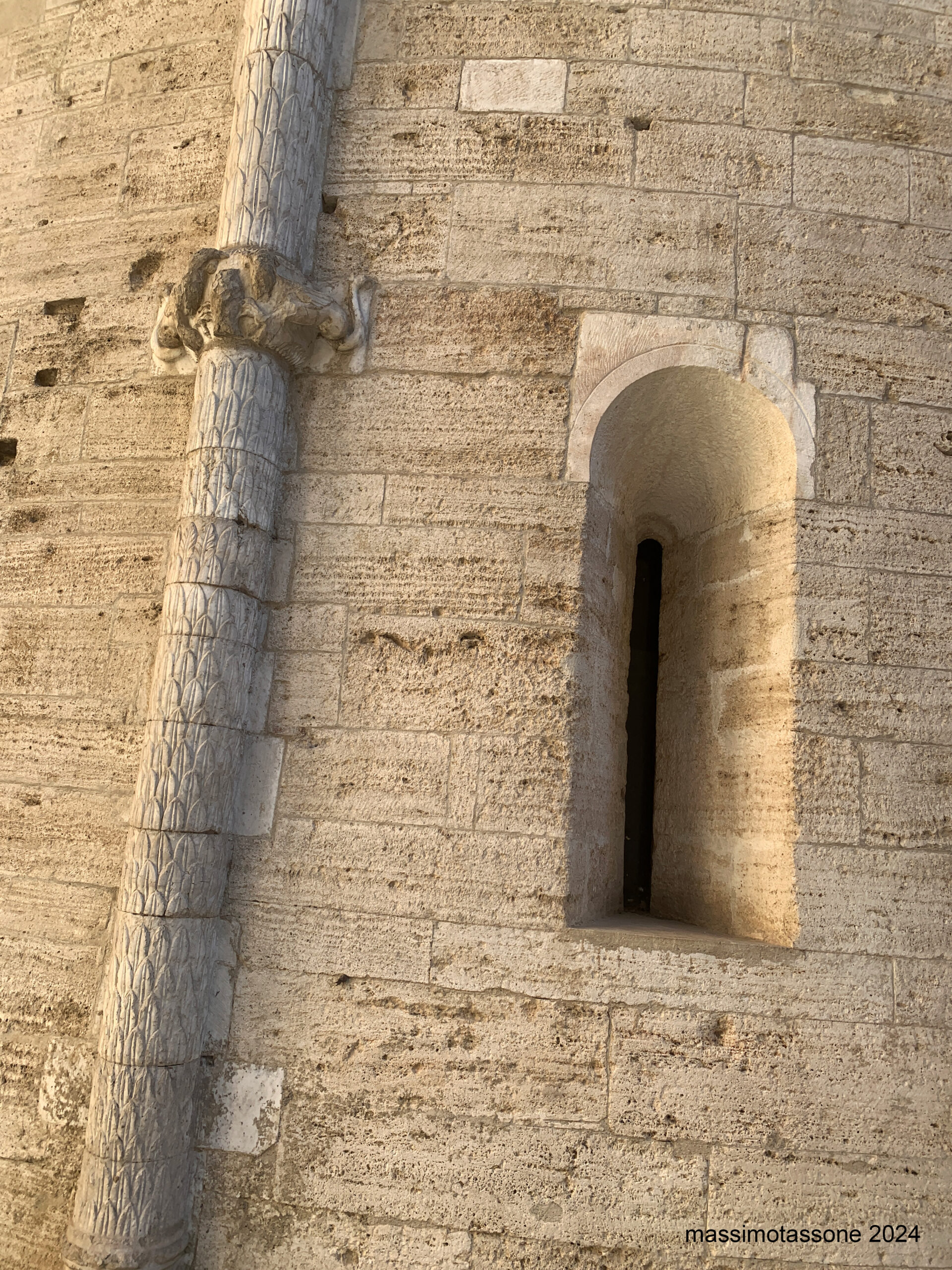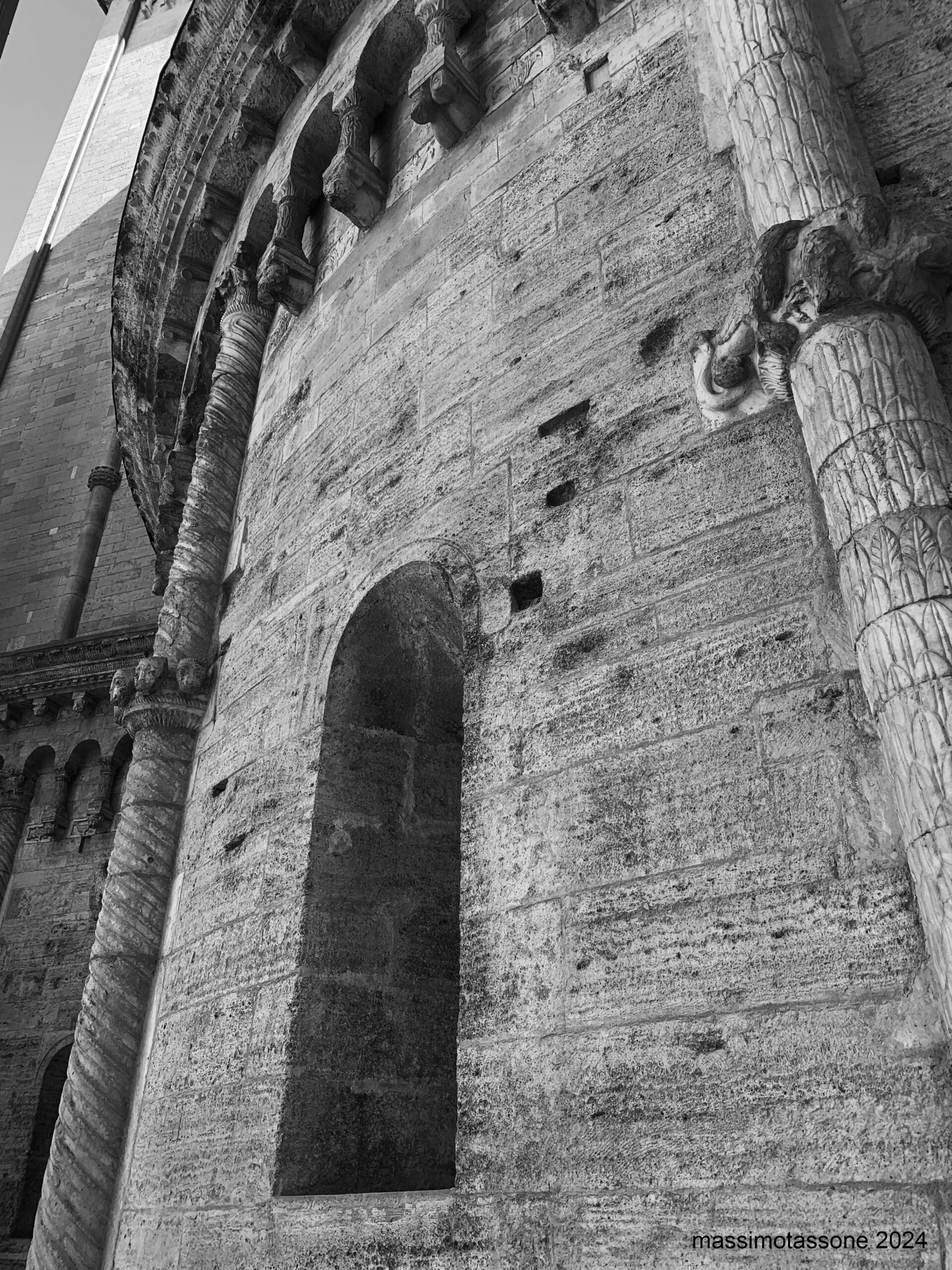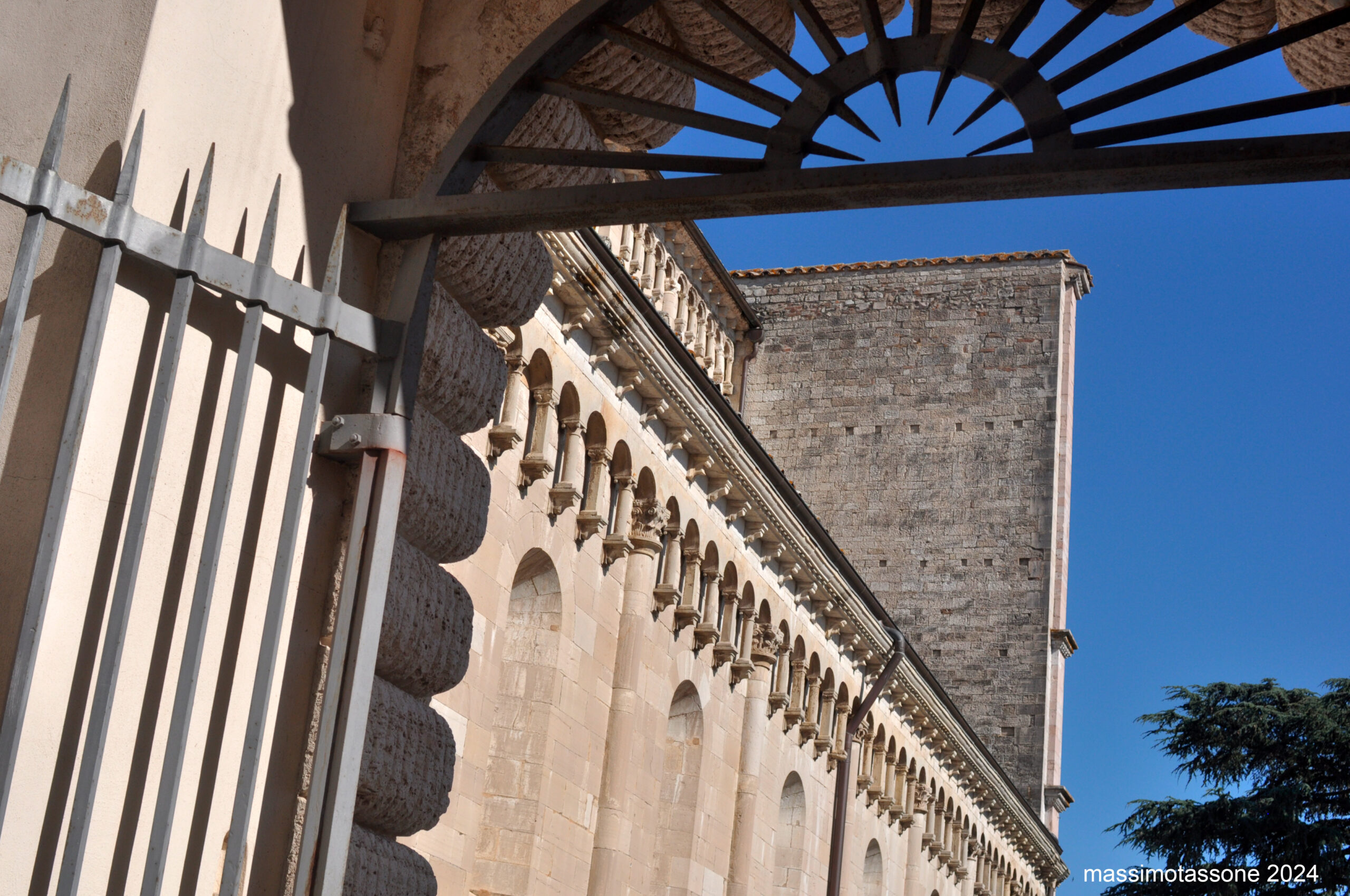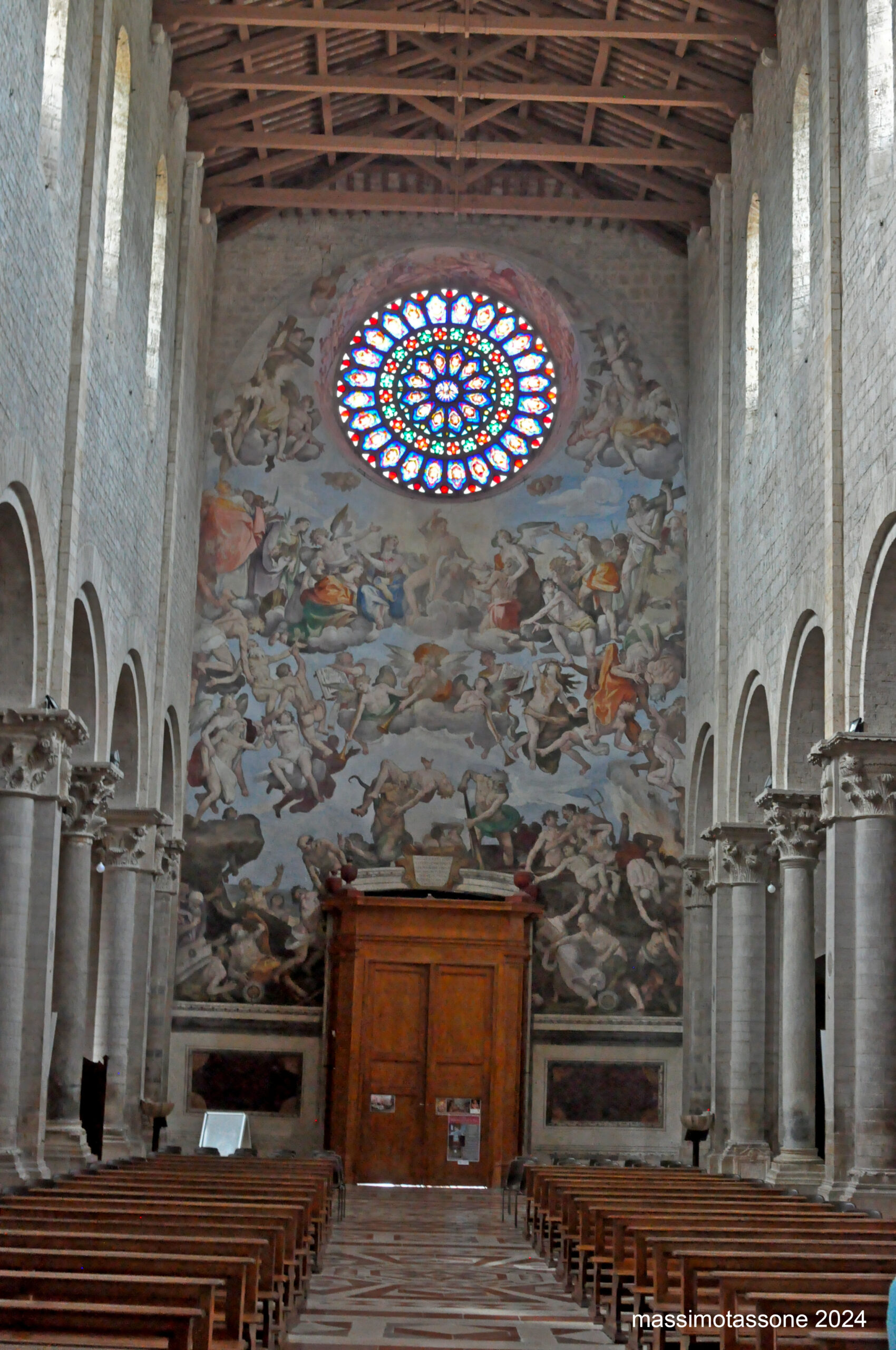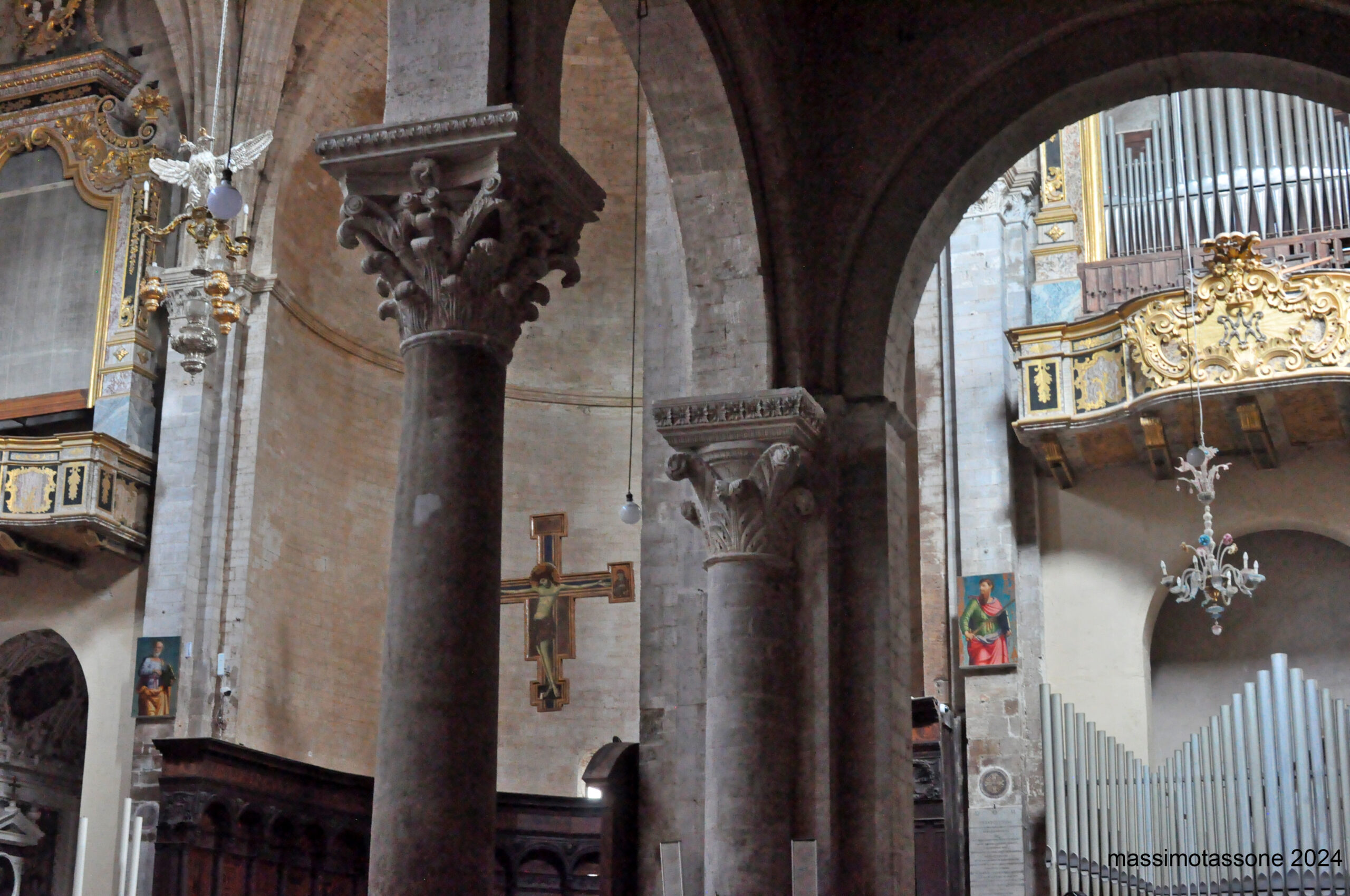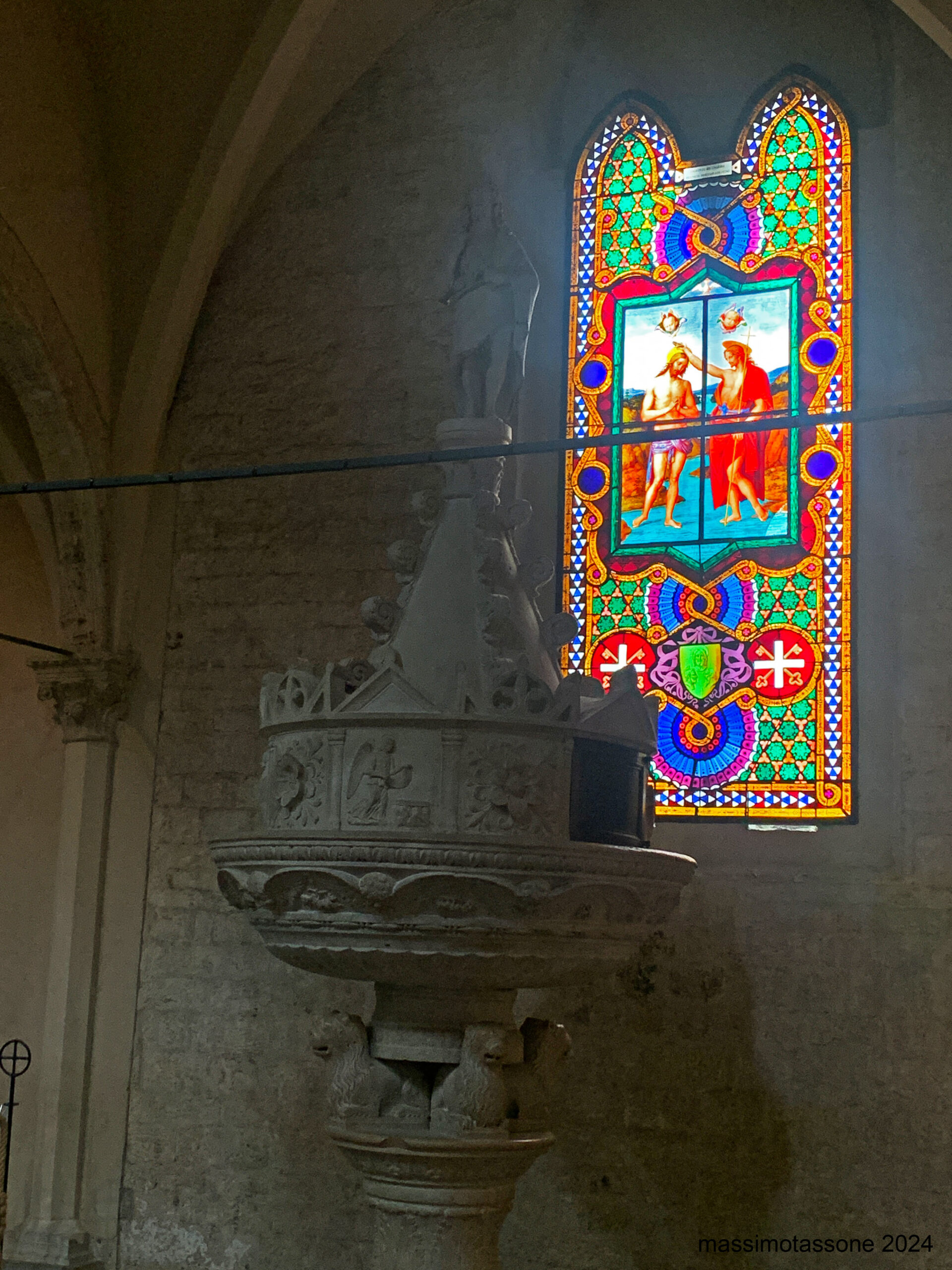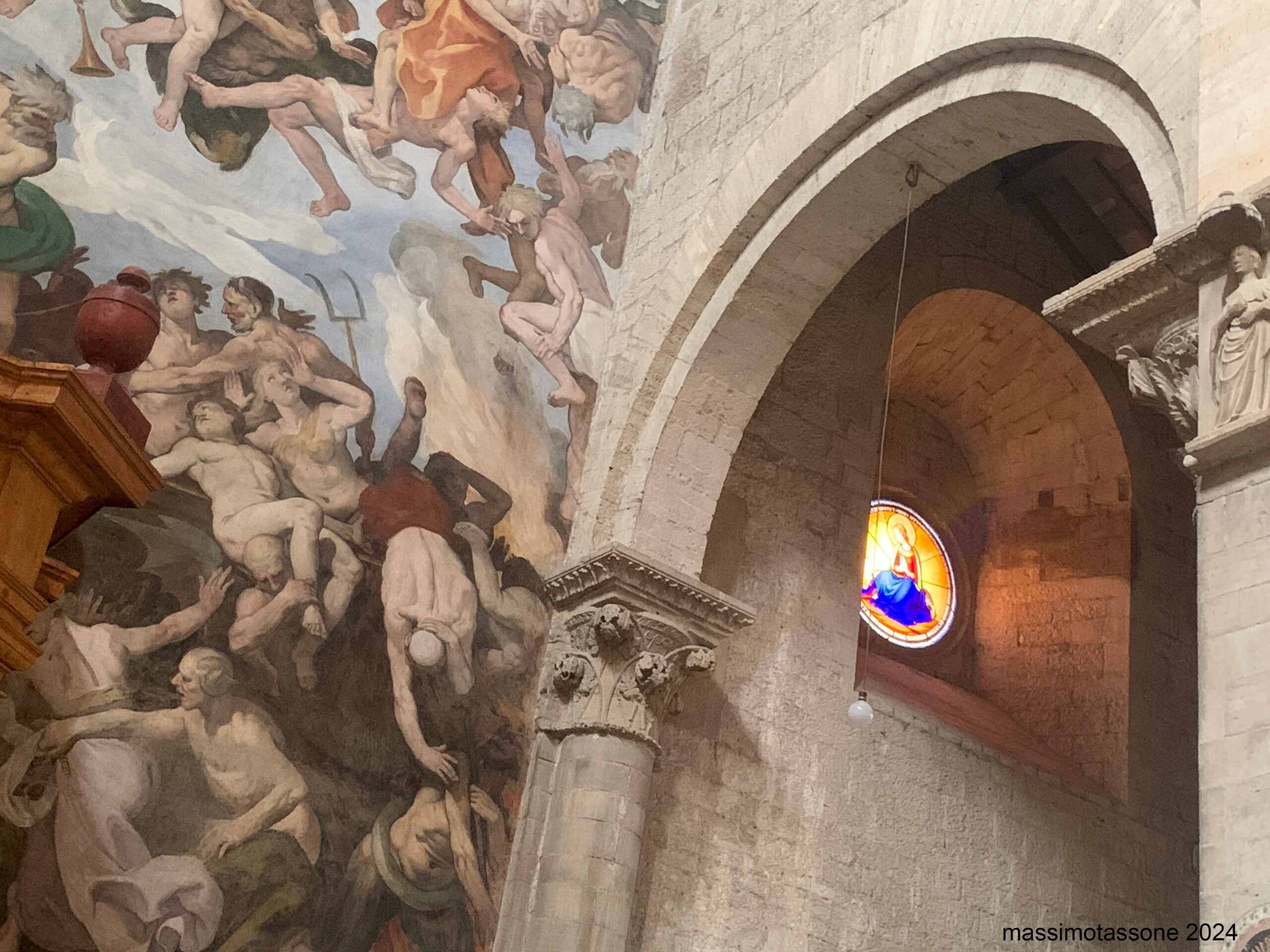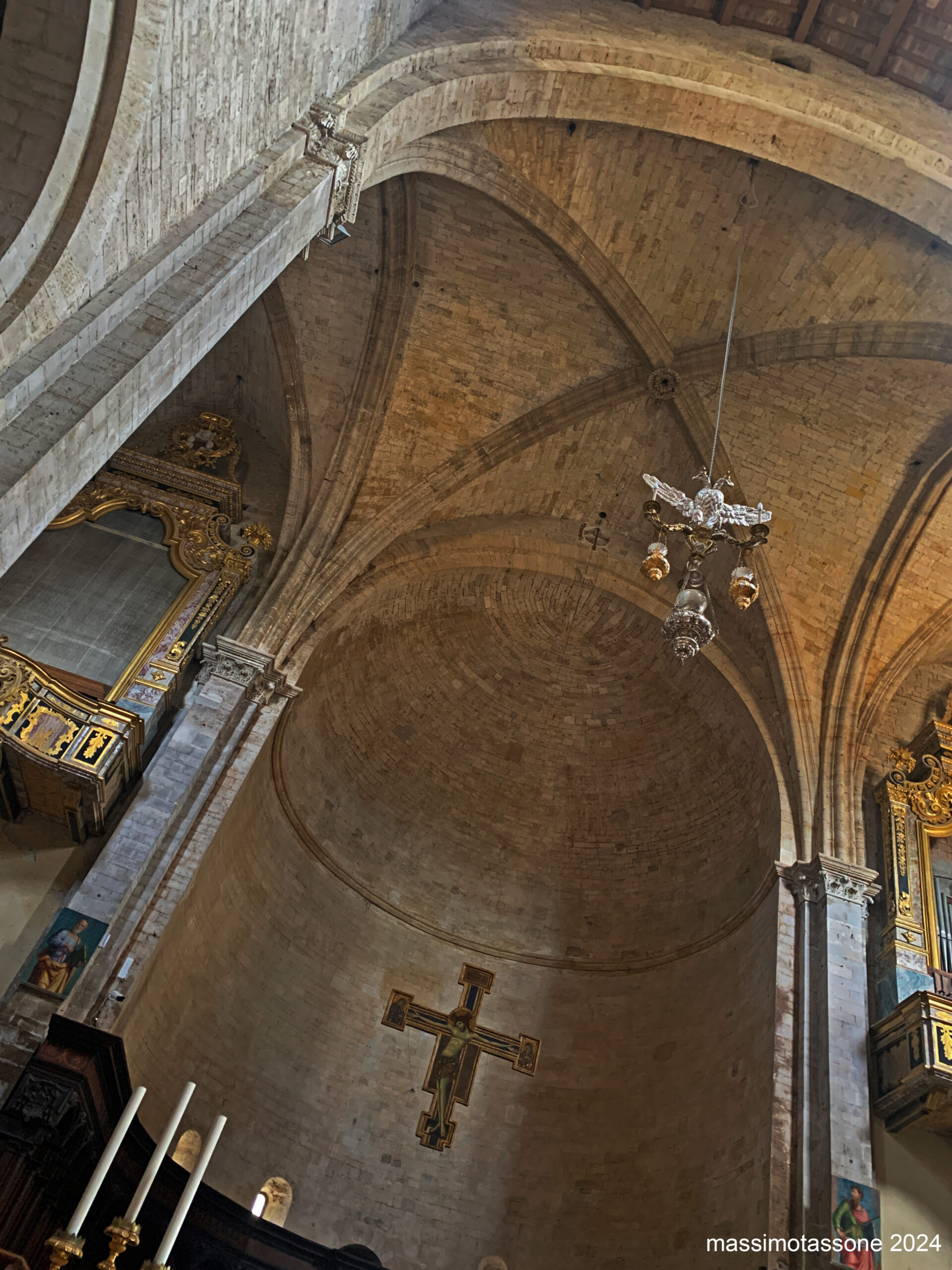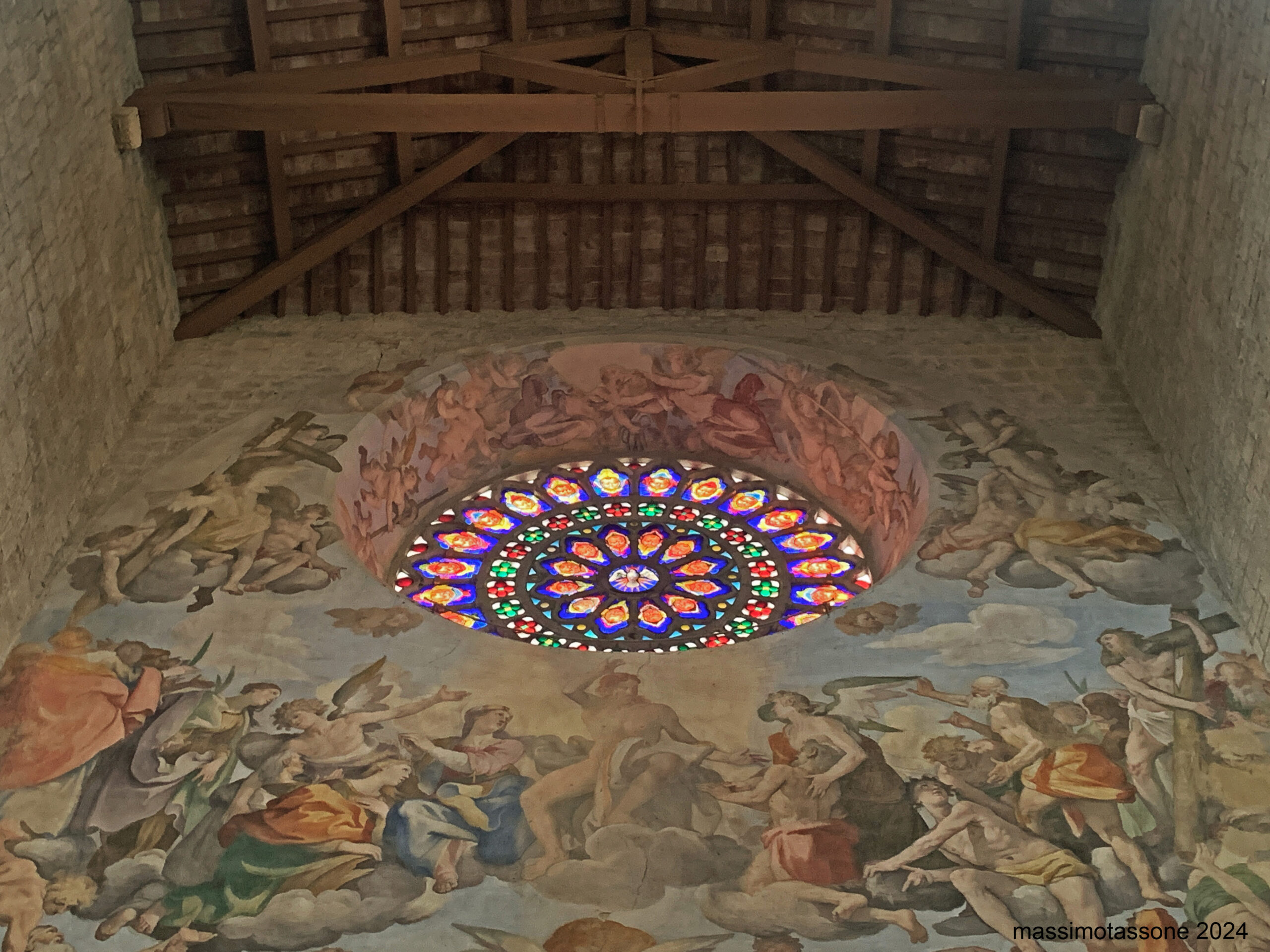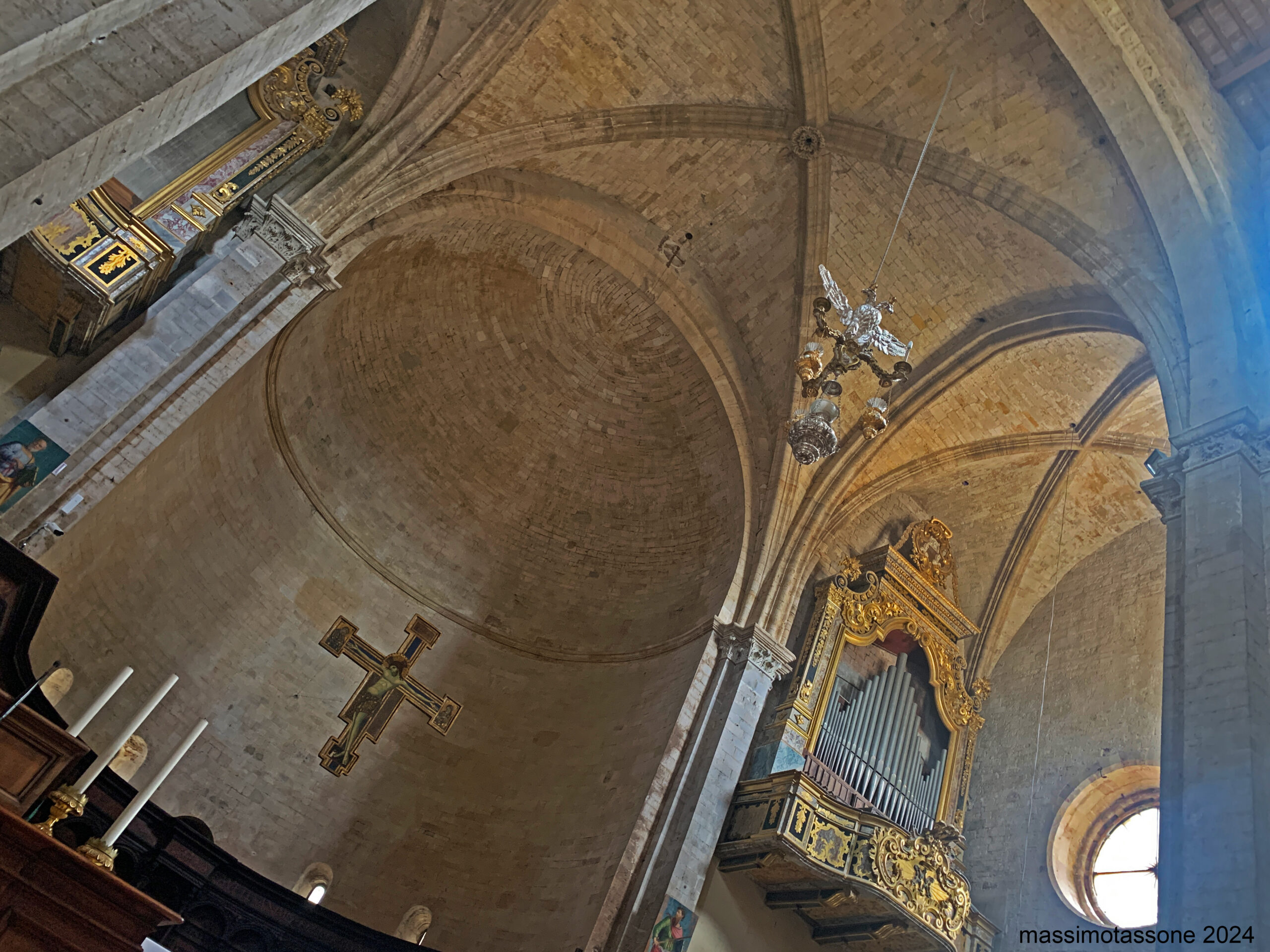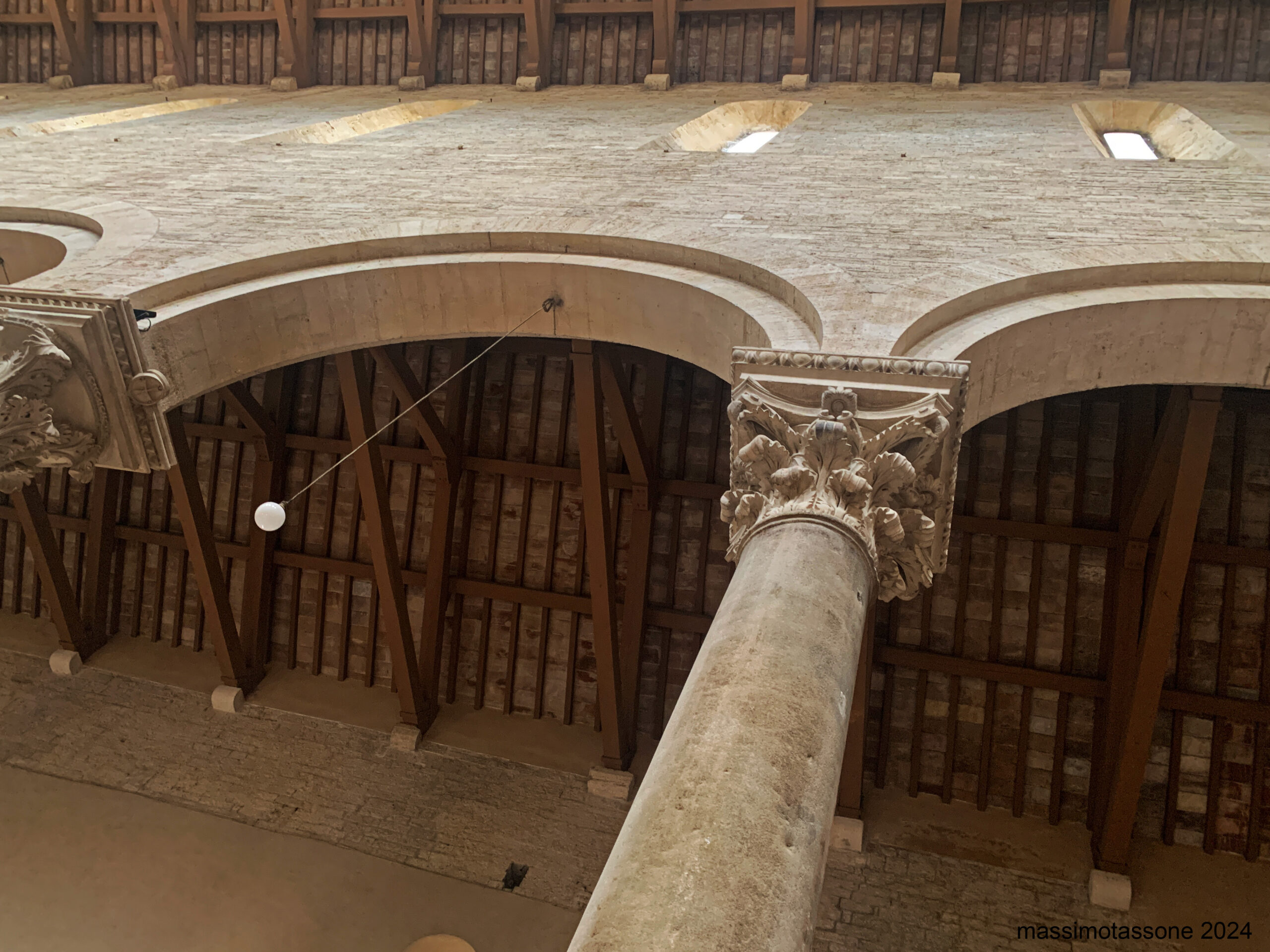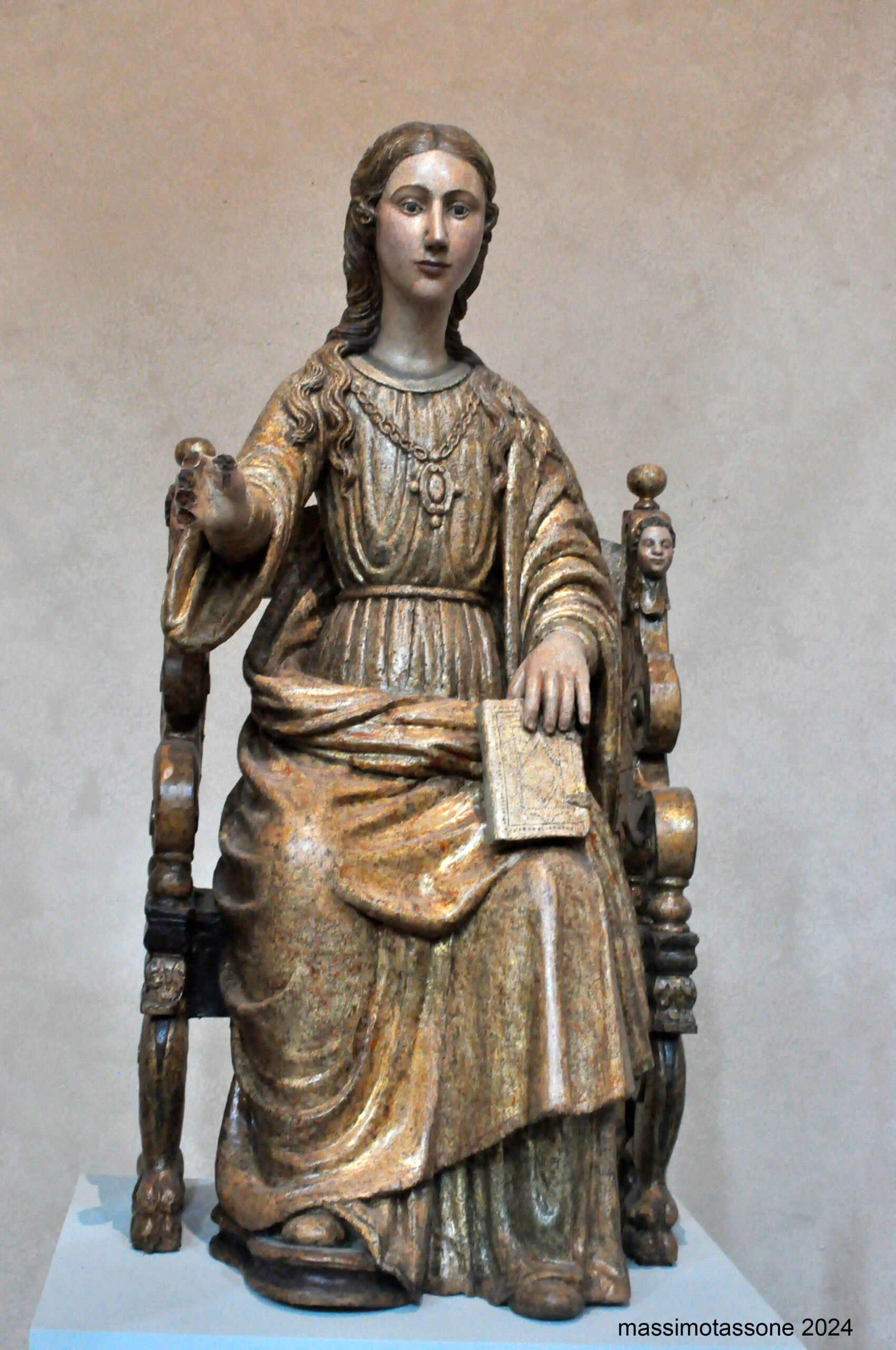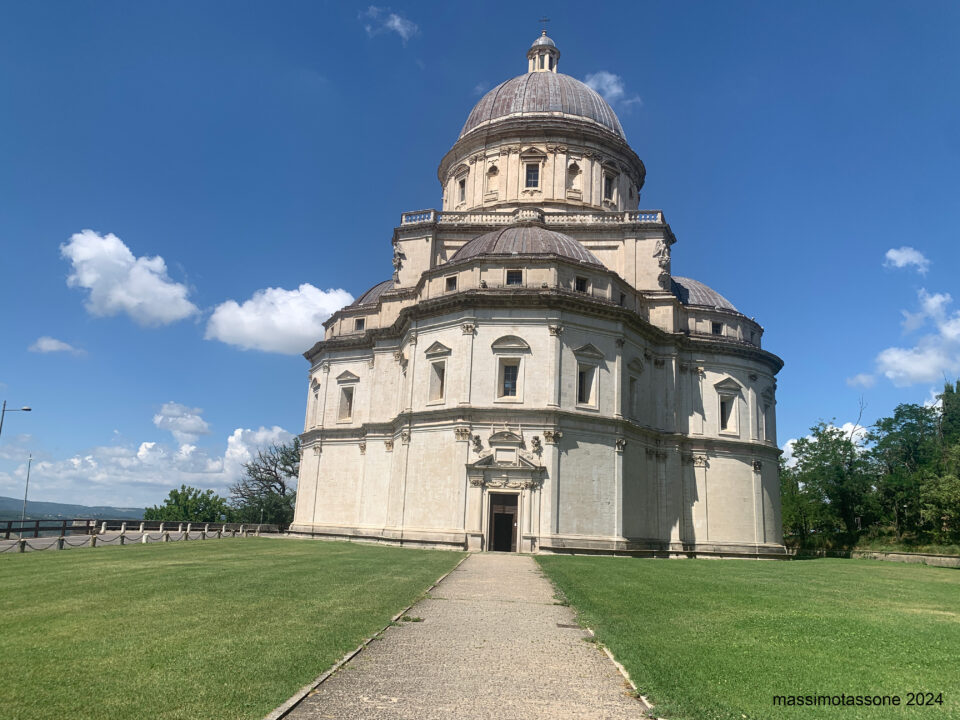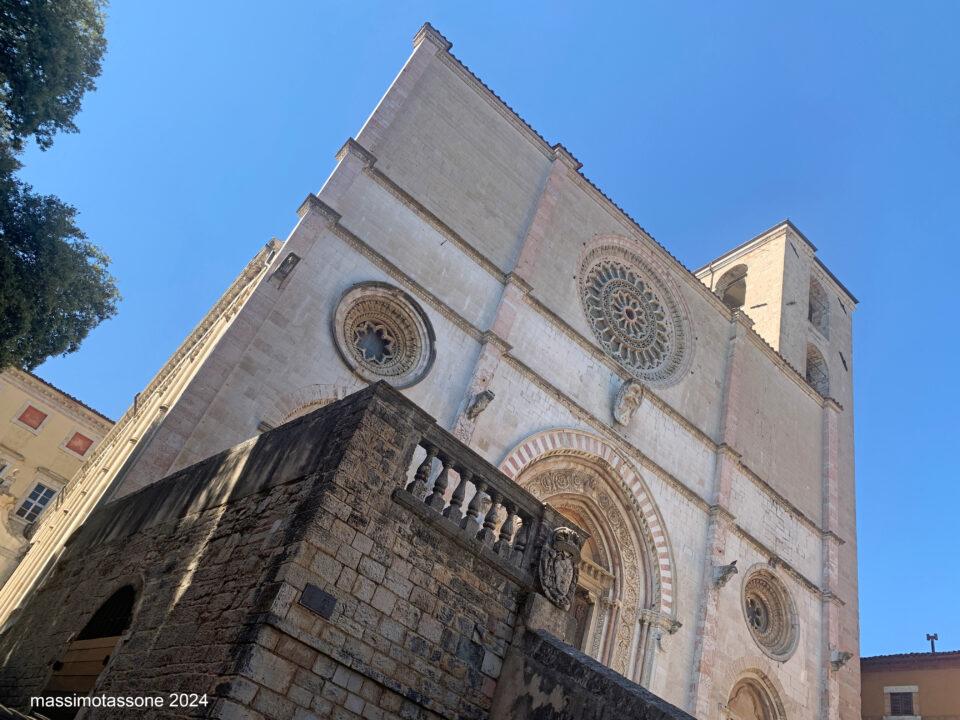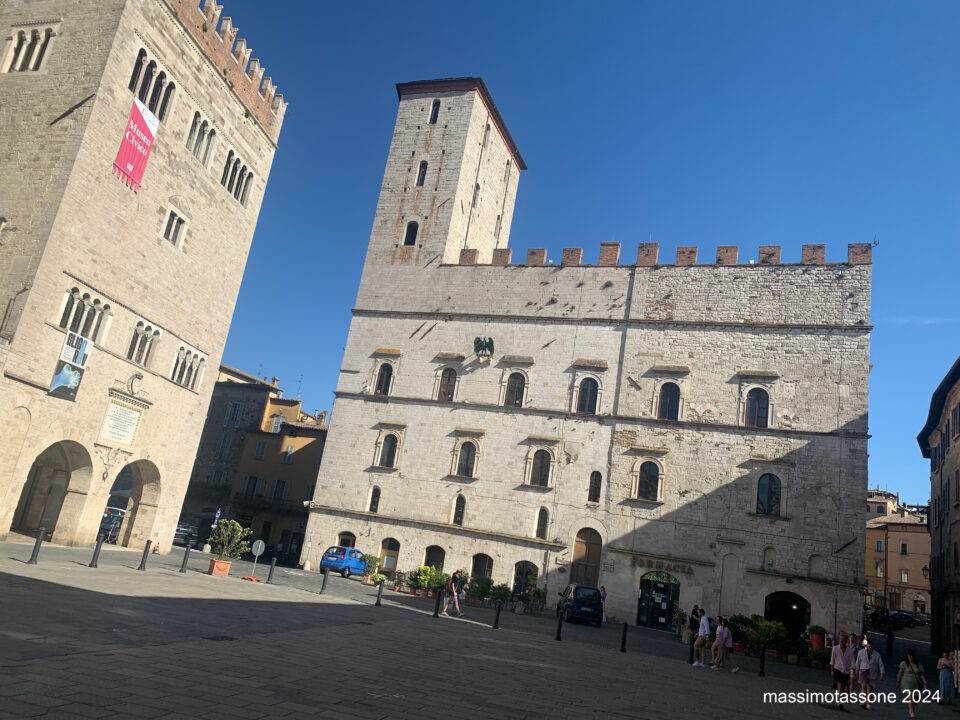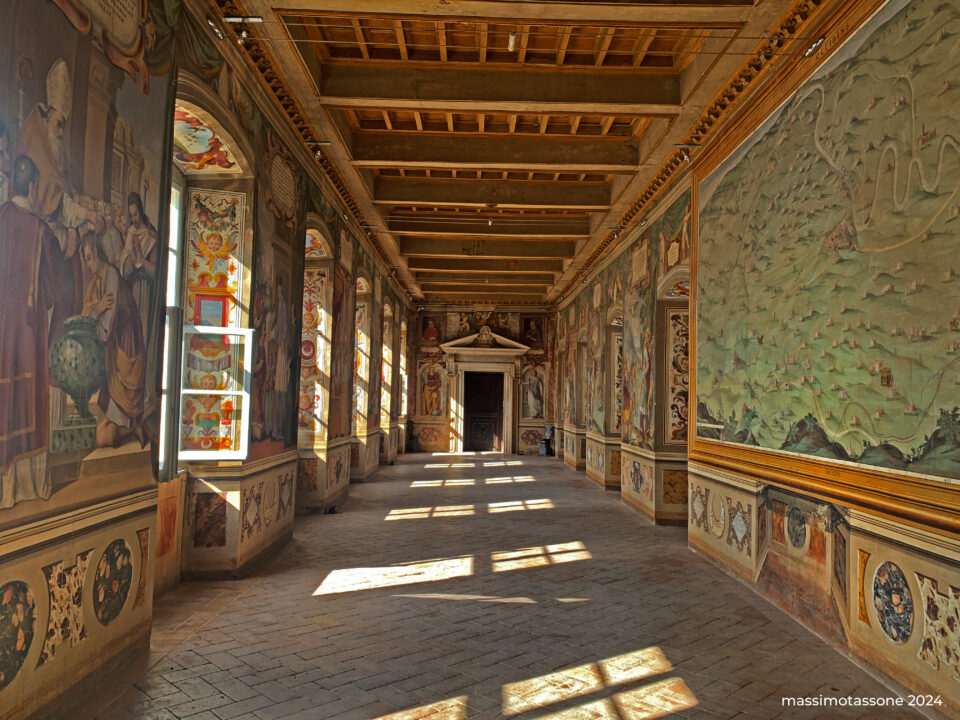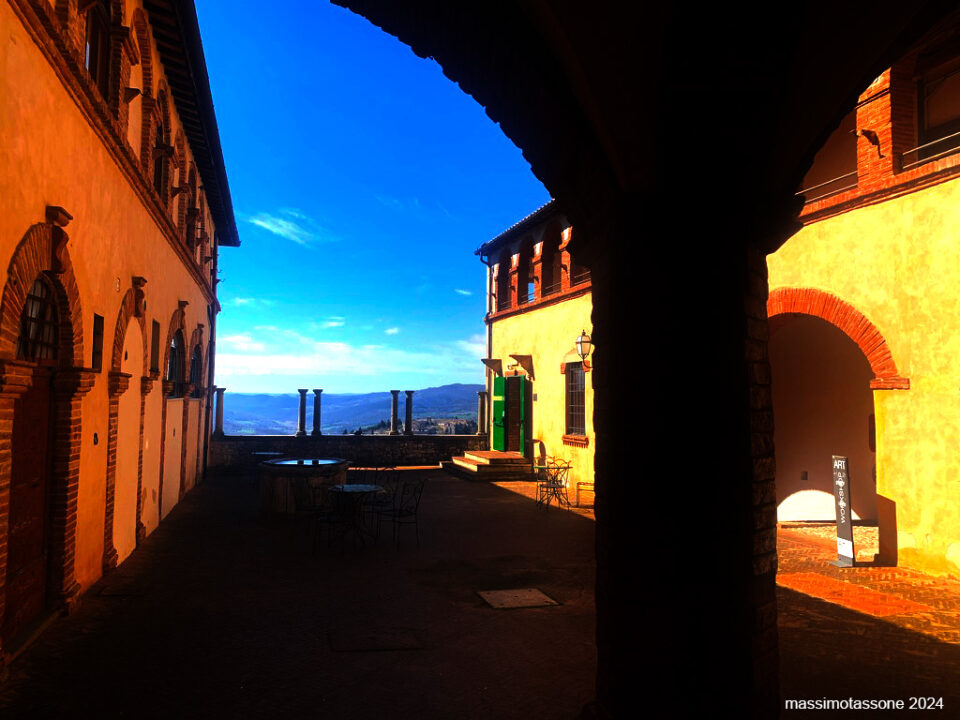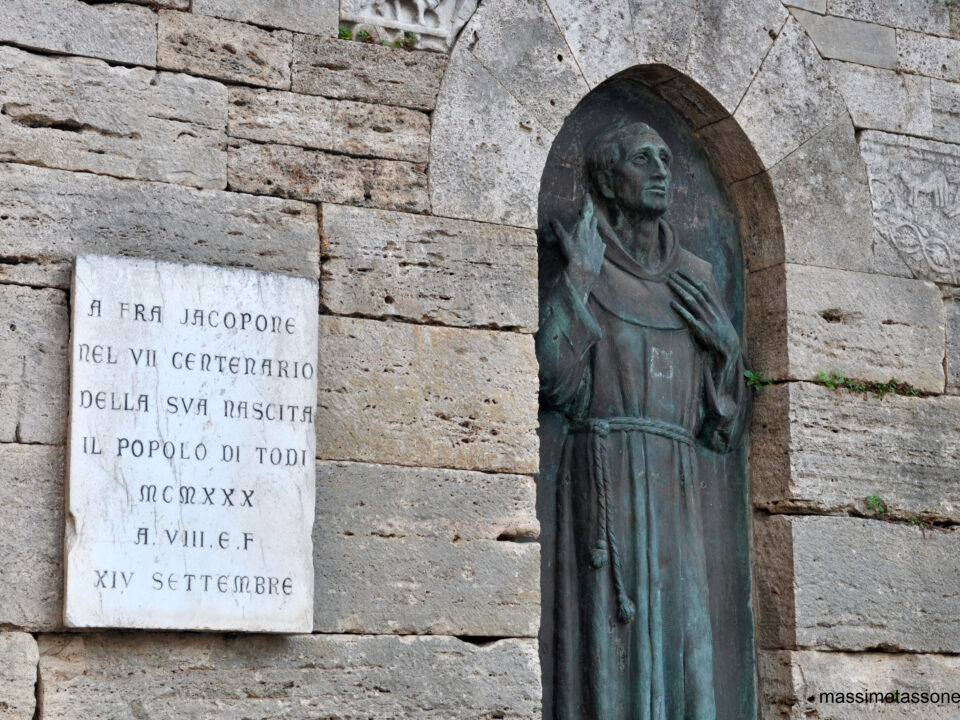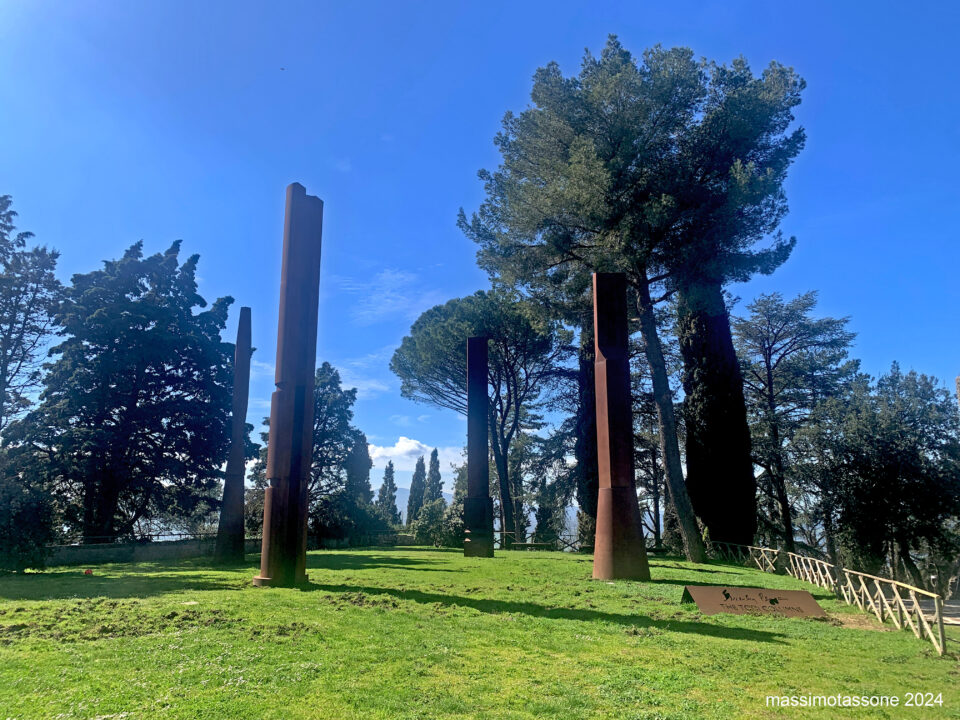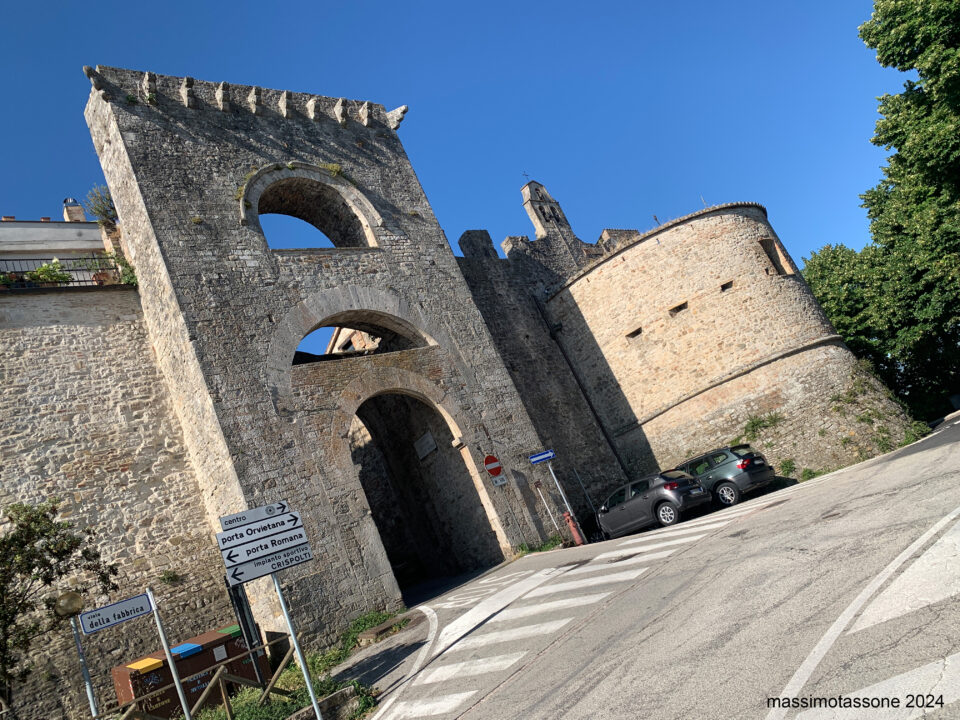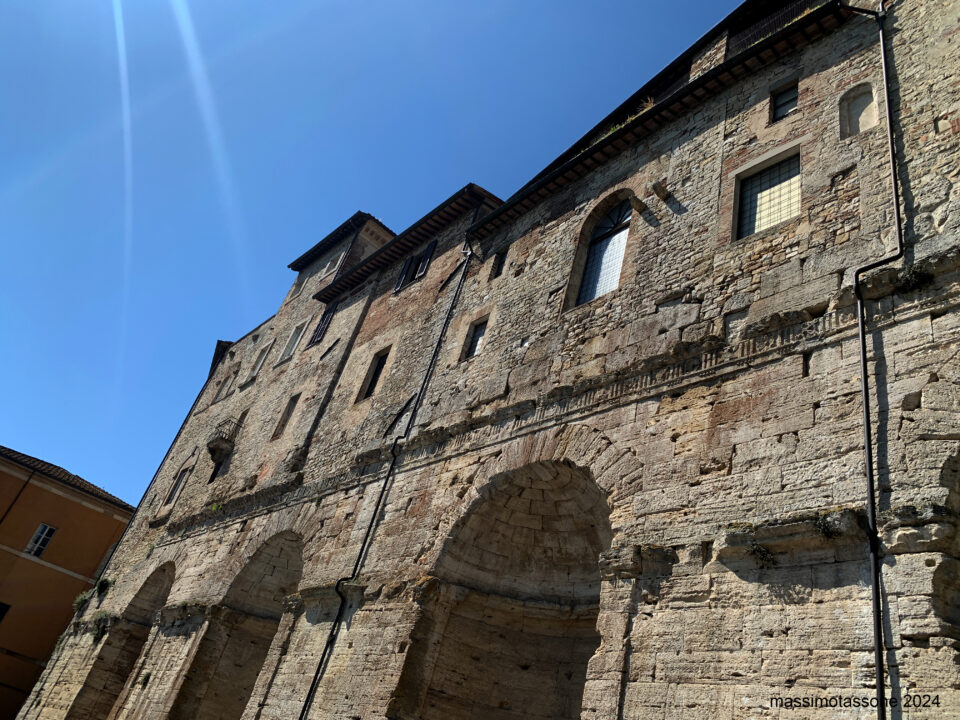Located on the northern side of Piazza del Popolo, the Cathedral ideally represents the heart of the city of Todi. With its bell tower rising to the right of the facade, the building overlooks the rooftops of the city and, along with the three civic buildings, creates the perfect frame for one of the most beautiful and stylistically coherent urban-architectural compositions in Italy.
The modern building stands on the remains of the ancient Roman temple, the Capitolium, which separated the forum from the urban quarters behind it. Behind the Duomo of Todi, the remains of an ancient Roman villa with mosaic flooring and some blocks from the old city walls have been discovered. The name of the district, also significant – “Nidola” or “Eagle's Nest” – still echoes the legendary bird that founded the city and built its nest in these lands.
The construction of the building began in the 12th century and was modified and expanded repeatedly until the 17th century. Today, only the apse remains of the original plan, created by the Comacini Masters.
Twenty-nine travertine steps make up the monumental staircase built in 1740 by Bishop Giuseppe Pianetti. The impressive, essential facade sits atop the staircase, with a horizontal upper closure in Lombard style. The original pyramid of the bell tower was replaced by an octagonal spire, which was demolished in 1958. Three entrance portals correspond to the three internal naves. The central door is decorated with rich oak woodwork reminiscent of the Duomo of Orvieto, created by the Bencivenga da Mercatello masters (the four upper panels) and Carlo Lorenti (the six lower panels). At the top of the facade, crowning the monumental entrance, stands the beautiful central rose window, begun during the episcopacy of Bishop Basilio Moscardi (1515) and completed under his successor (1523), a jewel of Renaissance art.
The building’s plan is in the shape of a Latin cross, and the interior is divided into three naves separated by ten magnificent Corinthian columns with acanthus leaves, supporting the wooden trussed ceiling. The floor is made of white Assisi stone. Immediately behind the visitor, around the central rose window, is the stunning fresco of the "Last Judgment" created by Ferraú da Faenza in 1596, based on Michelangelo's models. Other noteworthy works of art also reside within the building: two paintings attributed to Spagna depicting the Trinity and Saints Peter and Paul, the beautiful 13th-century Crucifix suspended above the altar, and a panel by Giannicola di Paolo depicting the Madonna with Child and Saints. From the left nave, one descends into the cathedral's crypt, where three stone sculptures, part of the facade, attributed to sculptors Giovanni Pisano and Rubeus, are kept.


